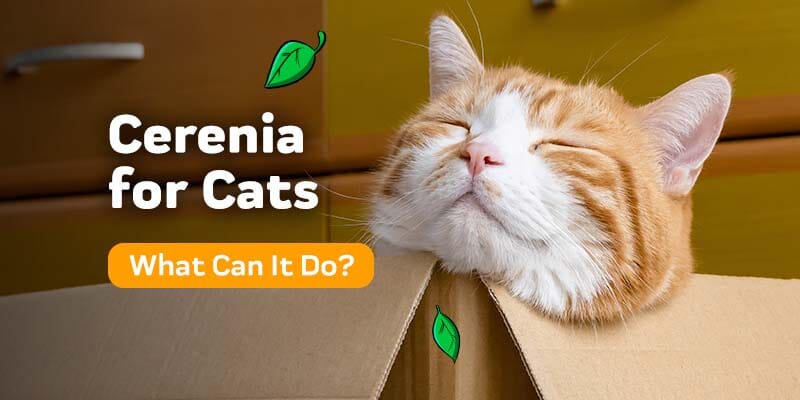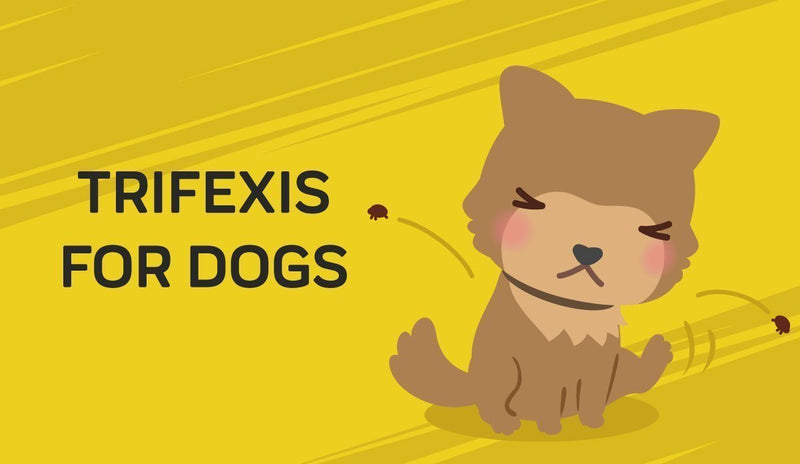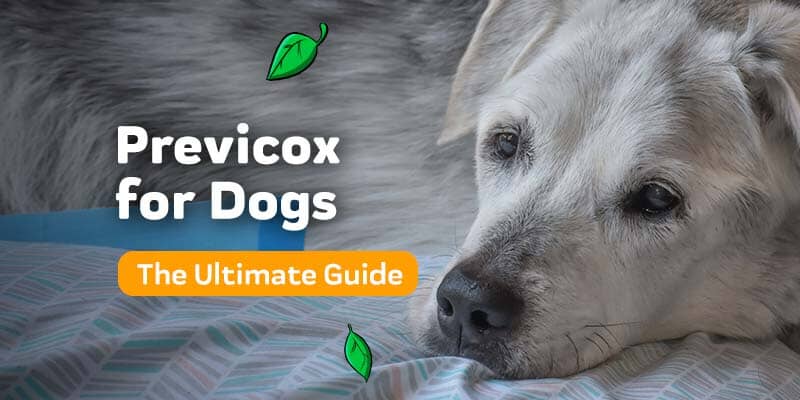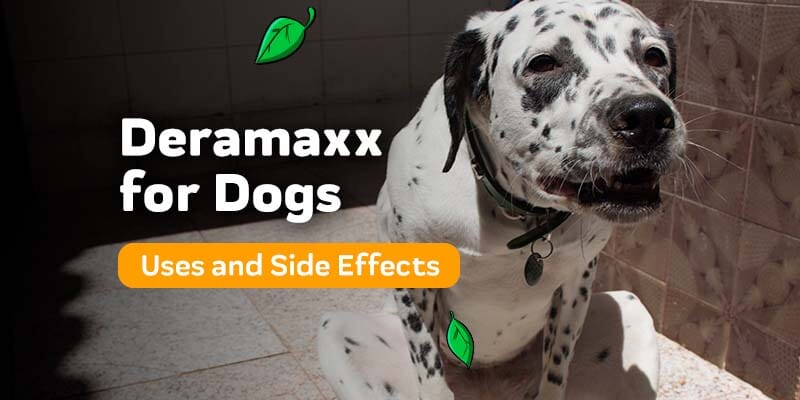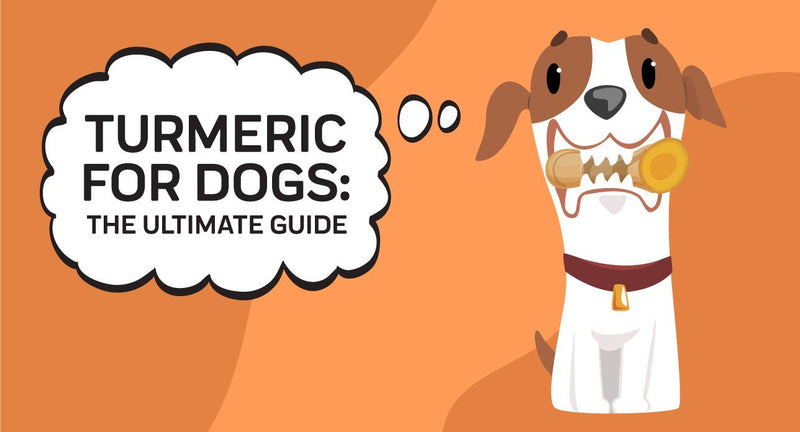Have you noticed that your cat has started moving slower than usual? Maybe your kitty cat is still completely mobile but his or her joints seem to make noise with every movement. It’s even possible that you might not notice anything at all until your cat’s veterinarian mentions joint pain during your pet’s annual check-up exam.
But if this is the case, don’t be too hard on yourself for not realizing there was a problem sooner. Cats are sneaky little creatures and they evolved as a species that hides their pain as much as possible. It can sometimes be hard to tell if a feline is hurting because they actively try to keep anyone from noticing any symptoms that might be viewed as disadvantageous. That’s why it’s so important to keep your cat up-to-date with the vet.
If you are someone who has experienced joint pain, or if you have known somebody whose joints have been inflamed, then you already know how debilitating severe joint pain can be, especially if and when it goes untreated. Joint pain often goes hand-in-hand with inflammation, and as much as we would like to avoid joint pain, it can creep up on anyone and everyone, especially as you get older.
Aging is a natural process that unfortunately brings along the possibility of quite a few painful side effects. Joint pain is one of the most commonly experienced symptoms of growing older. This goes for people as well as animals. When people start to feel joint pain, we often take action as soon as we notice that something is wrong. But when it comes to pets, they are not able to speak up and tell us what’s going on with them. Instead, we have to tune into their behavior and look for symptoms that might give us a clue as to their condition.
It can be really hard to watch your beloved cat go through something as all-encompassing as joint pain. We understand that the situation can be even more heartbreaking because cats are such active animals and joint pain hinders their playtime. But your feline friend does not have to suffer. Joint pain is a condition that is jarring and life-changing at first, but it is well-researched, and many remedies are at your disposal. One particular medication intended to treat joint pain in cats is called Cosequin which is designed specifically to improve joint health and helps in maintaining optimal joint function in cats.
Many pet owners ask, “Can cats take glucosamine?” In this blog post, we’re going to answer this question by giving you a general background on Cosequin, from the ingredients of the pharmaceutical drug and the potential side effects that Cosequin could cause for your cat. We will also discuss cannabidiol as an alternative method of handling joint pain for cats.
What Causes Joint Pain in Cats?
Let's have a brief teaching moment about joints and what they entail. So, there are five different components that make up the anatomy surrounding joints. There is the joint itself, and then there is cartilage, tissue, muscle, tendons, and ligaments. For clarity, joints are the connectors between bones in the body. However, if it weren't for the cartilage and synovial fluids that surround the joints, bones would rub against each other, and the mere thought of that is enough to make you shudder.
Cartilage is the reason we can move about with ease instead of discomfort. So you can probably see where this is going. Joint pain is caused by the breakdown of cartilage. But how does cartilage just disappear? There has to be something that causes the breakdown in the first place, right?
Right! You are correct. Cartilage begins to deteriorate over time. That’s why joint problems and severe arthritis can be a problem for an elderly cat. It can be hard to avoid painful joints when entering the elderly stages of life simply because the body tires out as a result of growing older. However, joint pain does not exclusively affect elderly cats. Younger kittens and middle-aged felines are prone to joint pain as well.
There are many possible causes of joint pain in cats. Here are a few contributing factors to painful joints…
- Cancer
- Obesity
- Inflammation
- Joint disorders
- Predisposition from birth
- Arthritis and osteoarthritis
- Arthritis caused by a compromised immune system
- Genetic condition as a result of overproduction of a certain growth hormone
- Infections caused by bacteria
- Natural degeneration of joints due to aging
- Injuries sustained at some point in life

Feline Arthritis: a Cause and an Effect of Cat Joint Pain
Speaking of arthritis, this condition is viewed as both a cause and an effect of joint pain in cats. In a way, feline arthritis is a catch-22 situation. Joint pain often leads to arthritis, and from there, arthritis exacerbates joint pain.
Unfortunately, arthritis is not curable in the sense that your cat will be able to revert back to how they felt prior to being diagnosed with arthritis. However, it is a condition that can be managed and controlled so that constant pain is not a requirement.
There are three primary types of arthritis in felines…
- Bacterial arthritis
- Calicivirus arthritis
- Feline chronic progressive polyarthritis
Believe it or not, bacteria can cause joint pain to the point of inflicting a bout of arthritis. Bacterial arthritis in cats is often caused by open wounds, like being bitten or scratching themselves on something. When sores don’t heal properly, they become infected. When bacteria from the outside world enters your cat's body by way of the wound, it can begin to infect the joints, and eventually, your cat's bones.
The process of treating bacterial arthritis is lengthy and somewhat intense, but the good news is that there is a treatment method in place! After draining fluid and keeping your little buddy on an antibiotic for the appropriate period of time, your cat's joint pain as a result of bacterial arthritis will begin to disappear.
Calicivirus arthritis is is...you guessed it! A virus. It is the leading cause behind feline respiratory disease, which results in cold-like symptoms, such as eyes that don't stop watering and a nose that won't stop running. Aside from its infliction of respiratory disease in cats, calicivirus is also often attributed as the cause of inflammation in the joints. The virus affects the way cats move, but thankfully, time is the best cure for calicivirus arthritis.
Viruses are incapable of being tackled by anything. There aren’t any medications that can force a virus to make its way through a cat’s body any faster, but there are ways to minimize the effects of the symptoms that a virus causes. That is a discussion for another day, but just know that calicivirus arthritis is a temporary form of joint pain that will decrease and fade away once the virus leaves your kitty’s respiratory tract.
Feline chronic progressive polyarthritis happens to be the most severe form of the three forms of feline arthritis. As a progressive form of arthritis, polyarthritis is also chronic. Together, these descriptors mean that polyarthritis gets worse over time and it is not curable. So, in other words, once your kitty is diagnosed with polyarthritis, you should be prepared to manage your cat's symptoms for the rest of your pet's life.
As daunting as it might sound, know that there is nothing to fear about polyarthritis, as long as you stay on top of treatment and care for your cat's symptoms. Cosequin is one of many ways of relieving the painful side effects of feline arthritis -- polyarthritis included. Polyarthritis can be acute, though it often becomes chronic, even if it doesn't start out as such.
The acute form of polyarthritis in cats is denoted by a high fever, stiff limbs, exhaustion, a lack of appetite, fluid building up in the joints, and overall expressions of pain. Oftentimes, your cat's paws will not move as they usually do, or you might notice that your feline friend is favoring certain paws over the other.
The thing about feline chronic progressive polyarthritis in its acute stage is that it might not constrict the mobility of every single joint in the same way. So looking at your cat's movements and noticing that he or she seems to favor one side of the body could be an indication that your cat is in the acute stage of polyarthritis.
The chronic stage of polyarthritis is the point at which the deterioration of cartilage is so severe that the bone is exposed. While any amount of cartilage breakdown can result in some level of pain, polyarthritis in the chronic stage is one of the more painful situations for your cat. The joints will rub against bone rather than the comforting cushion of cartilage, and you can expect to see swollen joints at this point, due to the joint-on-bone contact. Calicivirus arthritis
Cosequin is a viable option for the resolution of any of the aforementioned types of feline arthritis. When your cat is experiencing pain as a result of inflamed joints, Cosequin will swoop in and save the day.
Prescription Medications for Joint Pain: What is Cosequin for Cats?
Your kitty cat will not be prescribed a dosage as high as a horse might require, but the fact that Cosequin can help the joints of horses and cats alike speaks to the supplement’s powerful healing properties. The appropriate dosage of Cosequin is dependent upon your pet’s weight. Cosequin is a medication that does not require a prescription prior to purchasing. As the best glucosamine for cats, Cosequin works to protect the cartilage that rests between your cat's joints. As a joint health supplement, the main purpose of Cosequin for cats is to resolve the cause of your feline’s pain. Interestingly enough, Cosequin is designed to treat joint pain in horses, too.
According to Cosequin’s advisory information, the recommended amount of Cosequin capsules to give your cat depends on its weight. For cats weighing less than ten pounds, only one capsule should be given with their moist food or wet food. If your feline weighs more than ten pounds and your cat eats dry food, two capsules of Cosequin should be administered along with wet food. Always add Cosequin to your cat's food whether it is dry food or wet food.
If your cat eats wet food exclusively, the amount of Cosequin capsules given should be adjusted according to their weight (one capsule for cats under ten pounds and two capsules for those over ten pounds). Ultimately, it is important to follow the dosage recommendations on the Cosequin packaging in order to ensure that your cat receives the appropriate amount of nutrients and get the desired response.
How Long Does it Take for Cosequin to Work in Cats?
If you have ever taken medication for long-term treatment, you probably already realized that Cosequin will take some time to work.Supplements for pets need to be introduced to the body over and over again until they are able to take effect. It takes some patience, but if you’re wondering how long it takes for Cosequin to work in cats, we have the answer for you!
One of the many perks of Cosequin as a joint pain reliever is that it is fast-acting. On average, Cosequin takes about four to six weeks before you’ll see noticeably positive changes. Be sure to take this with a grain of salt because every cat is different, so your feline friend might exhibit symptoms of joint pain for longer, or your little buddy will seem to be relieved within a shorter time frame. Some cats will receive Cosequin well while others might not be as susceptible to a good outcome.
Cosequin is More Than A Joint Health Supplement Brand
Cosequin is a joint supplement for cats that helps to support cartilage health and joint utility. The active ingredients in Cosequin help to slow down the breakdown o fcartilage, promote healthy cartilage cell production, and reduce inflammation. As a result, Cosequin can help to improve joint function and flexibility, while also reducing pain and stiffness.
In addition to supporting joint health, Cosequin also helps to support urinary bladder health. The active ingredients in Cosequin help to maintain the strength and integrity of the bladder wall, which can help to reduce the risk of urinary incontinence. Cosequin is made under stringent quality control measures to ensure that it meets the highest standards of quality and safety and to ensure it meets label claim. As a result, Cosequin is an effective and safe way to support the health of your cat's joints and urinary bladder.
Side Effects to Be Aware of with Cosequin for Cats
The side effects of Cosequin are worth considering. They may make or break your decision to give Cosequin to your cat for joint pain.
Some of the side effects pet owners have reported seeing after starting their cat on Cosequin include...
- Changes in behavior
- Sudden change in sleeping patterns, especially if your cat is napping more than usual
- Hiding under surfaces and opting out of playtime
- Not making it to the bathroom on time
- More aggressive and defensive
- Cleaning themselves too much
- Not grooming themselves at all
- Snappy tendency to bite and nip more often
What are the Main Ingredients in Cosequin?
Cosequin is considered a joint supplement with nutritional benefits, which is a fantastic approach to reducing joint pain and relieving your cat of his or her discomfort. Cosequin is the brand name of glucosamine, which is an amino sugar. Glucosamine is a fascinating supplement because it is created from the exoskeletons of crustaceans. It can also be produced as a by-product of grains as they ferment, but the more common origin of glucosamine is the outer shells of crabs, shrimp, lobsters, and other aquatic arthropods.
Unlike many prescription medications, Cosequin is mostly comprised of ingredients found in nature. The two completely natural components of Cosequin are glucosamine hydrochloride and sodium chondroitin sulfate. Glucosamine hydrochloride refers to the amino sugar mentioned above, combined with an acidic salt, called hydrochloride.
Sodium chondroitin sulfate is sourced from the cartilage of animals, the most common of which are cows and sharks. The molecules of sodium chondroitin sulfate supplement the eroding cartilage in cats with joint pain, and they do it so well because they are naturally found in cartilage as it is. You can think of sodium chondroitin sulfate as making up for the cartilage your kitty cat is losing.
As pet parents, we only want the best for our furry friends. When it comes to their joint health, we want to make sure they're comfortable and don't have any existing cartilage issues.
Cosequin is a joint health supplement that helps with exactly that. The ingredients - sodium chondroitin sulfate and glucosamine hydrochloride - help support joint cartilage and protect existing cartilage healthy. Not to mention, it's a great way to prevent any future joint problems. So if you're looking for a joint health supplement for your cat, cosequin is definitely the way to go!
Beyond these two natural ingredients, Cosequin also contains six other additives…
- Gelatin
- Titanium dioxide
- Magnesium stearate
- Manganese ascorbate
- FD&C Blue #1
- FD&C Blue #3
These ingredients are not necessarily bad, by any means. It is just important that you are aware of everything that is found within a supplement before testing it out on your cat. These additional ingredients are beneficial and essential to the efficacy of Cosequin. In fact, gelatin is surprisingly very good for cats to consume and digest. As can be expected, gelatin assists in keeping joints and connective tissues healthy.
Feline Joint Health: How to Naturally Treat Joint Pain
While Cosequin is well-researched and has proven to be effective for the resolution of joint pain in cats, another more natural option for treating feline joint discomfort is cannabidiol. Also known as CBD, cannabidiol is a phytocannabinoid, meaning it is a naturally-occurring compound in the cannabis plant.
 However, CBD has one thing that glucosamine does not, and that differentiating factor has to do with side effects. Cannabidiol has absolutely no negative consequences, whereas the list of Cosequin for cats side effects is relatively lengthy. This is not a surprise, though. If you think about it, the fact that a semi-man made pharmaceutical supplements is prone to causing adverse reactions in cats is to be expected. Cannabidiol does not elicit any negative side effects, which is why it is often considered the safest option for pain relief. As a fully plant-based resolve, CBD is suitable for kittens, geriatric cats, and all felines in between. The art of managing feline joint discomfort is closer in reach than you might think. CBD for cats is an excellent supplement in the lives of cats who suffer from joint pain, whether it be for managing severe arthritis or minor discomfort. On the surface, cannabidiol and glucosamine may both help to relieve joint pain in cats.
However, CBD has one thing that glucosamine does not, and that differentiating factor has to do with side effects. Cannabidiol has absolutely no negative consequences, whereas the list of Cosequin for cats side effects is relatively lengthy. This is not a surprise, though. If you think about it, the fact that a semi-man made pharmaceutical supplements is prone to causing adverse reactions in cats is to be expected. Cannabidiol does not elicit any negative side effects, which is why it is often considered the safest option for pain relief. As a fully plant-based resolve, CBD is suitable for kittens, geriatric cats, and all felines in between. The art of managing feline joint discomfort is closer in reach than you might think. CBD for cats is an excellent supplement in the lives of cats who suffer from joint pain, whether it be for managing severe arthritis or minor discomfort. On the surface, cannabidiol and glucosamine may both help to relieve joint pain in cats.
Cannabidiol for Cats in Pain: Relieve Joint Pain with CBD
Are you interested in trying CBD oil for joint pain in cats? Innovet has everything under the sun, from oils and treats to chews and capsules - check out whycustomers are choosing Innovet PurCBD Oil compared to other competitor sites. Pure CBD oil for cats with joint pain is a purchase you won’t regret. Your cat will appreciate the way cannabidiol improves the pain he or she is experiencing continuously.
Sources:
Glucosamine and Chondroitin Use in Canines for Osteoarthritis
Oral Glucosamine and The Management of Feline Idiopathic Cystitis
Cosequin for Cats
Efficacy of Nutraceuticals to Alleviate
Transdermal Cannabidiol Reduces Inflammation
Approved by:
Dr. Sara Ochoa
Doctor of Veterinary Medicine, St. Georges University

Thanks for stopping by!
P.S. We Love You!
Sincerely,
The Innovet Team
Please do not ask for emergency or specific medical questions about your pets in the comments. Innovet Pet Products is unable to provide you with specific medical advice or counseling. A detailed physical exam, patient history, and an established veterinarian are required to provide specific medical advice. If you are worried that your pet requires emergency attention or if you have specific medical questions related to your pet’s current or chronic health conditions, please contact or visit your local/preferred veterinarian, an animal-specific poison control hotline, or your local emergency veterinary care center.
Please share your experiences and stories, your opinions and feedback about this blog, or what you've learned that you'd like to share with others.











